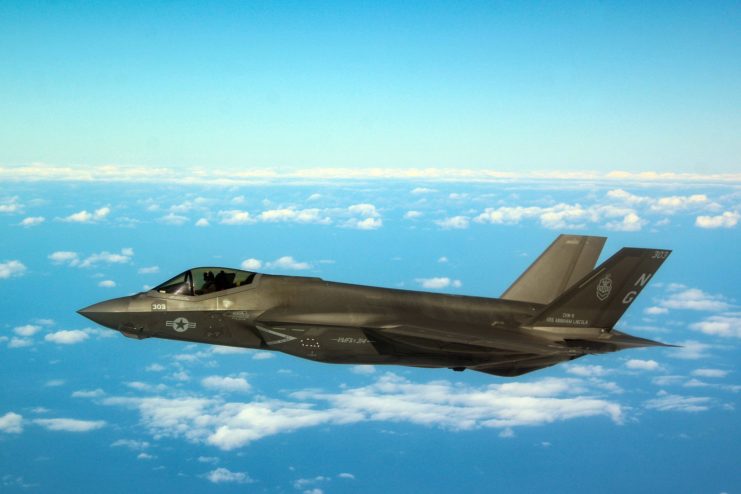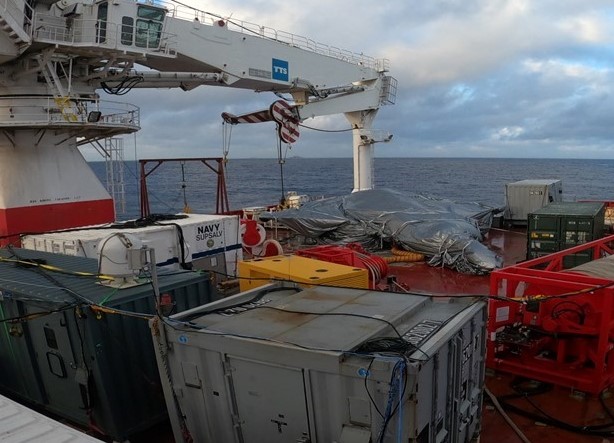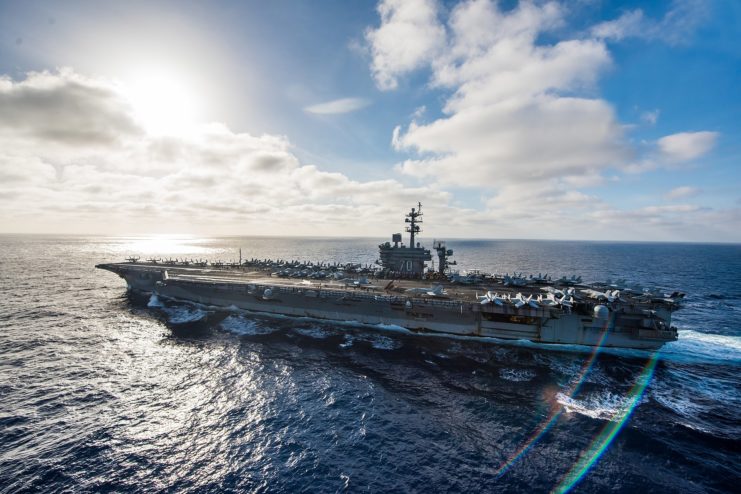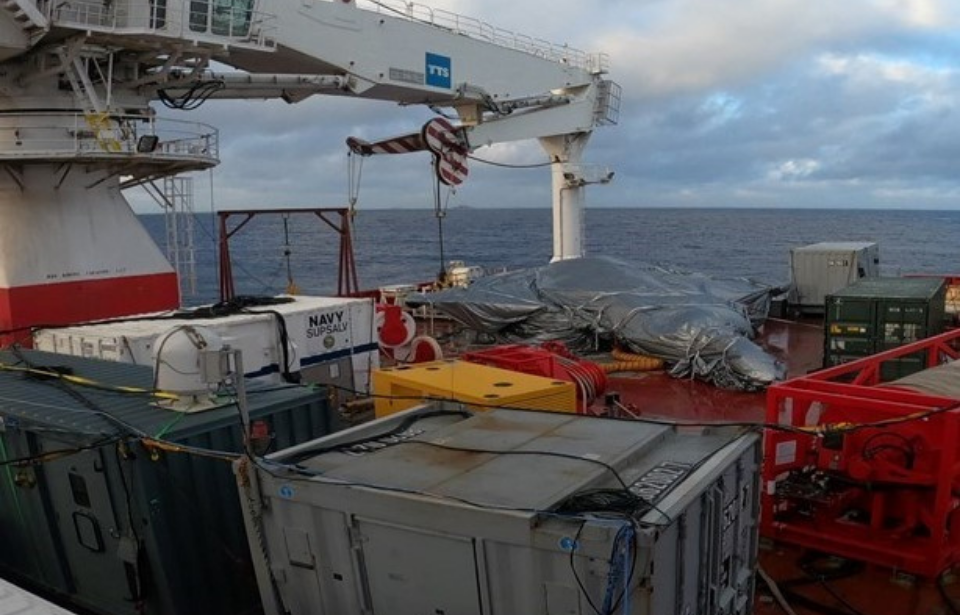The US Navy has announced an F-35C Lightning II Joint Strike Fighter has been recovered from the South China Sea, just over a month after it crashed while attempting to land on the USS Carl Vinson (CVN-70).

The retrieval was a joint effort by the US 7th Fleet Task Force (CTF) 75 and the Naval Sea Systems Command (NAVSEA). A team from CTF 75 and NAVSEA’s Supervisor of Salvage and Diving (SUPSALV) dove down 12,400 feet, after being transported to the crash site by the diving support construction vehicle (DSCV) Picasso.
A CURV-21, a remotely operated vehicle, attached rigging and lift lines to the F-35C, after which Picasso‘s crane lifting hook was lowered and attached. The aircraft was then lifted to the surface.
“The task force’s expertise in rapid, scalable command, control, and communications, agile logistics, organic security, and explosive ordnance disposal was the most flexible choice for the fleet commander to respond in a timely manner,” said CTF Commodore, Capt. Gareth Healy, in a statement.
“Ultimately, this deliberate approach resulted in the correct capabilities conducting recovery operations within 37 days of the incident,” he continued. “Given the unique challenges of this problem and the unique technical capabilities that NAVSEA delivered, this was an aggressive and achievable timeline.”
The primary reason for the quick recovery was fears Russia or China could seize the aircraft and attempt to either replicate its technology or use it to better target F-35Cs in combat situations with the US.

The F-35C, assigned to Carrier Air Wing (CVW) 2, was conducting routine flight operations with fighters from the USS Abraham Lincoln (CVN-72) in the South China Sea on January 24 when it crashed. Along with injuring seven sailors, including the pilot, who ejected before the aircraft hit the water, it severed four of the Carl Vinson‘s arresting cables.
The pilot and two other sailors were transported to a hospital in Manila for treatment, while the others were treated onboard the aircraft carrier. The Carl Vinson‘s deck was quickly cleared of debris, allowing other aircraft to return to the vessel later that day.

Shortly after the incident, photos and security camera footage were leaked to the media, showing the crash. According to USNI News, the F-35C was flying too low when approaching the flight deck, causing it to strike the rear of the Carl Vinson before “skidding on its belly and rotating 180 degrees while heading down the angled deck.” After skidding across the deck at around 95 miles an hour, it fell off the edge of the aircraft carrier.
The Navy confirmed the crash following the release of the footage, saying, “Impact to the flight deck is superficial and all equipment for flight operations is operational.” The leak resulted in four senior enlisted leaders and one Navy officer being charged with failure to obey an order under Article 92 of the Uniform Code of Military Justice.
The Carl Vinson returned to San Diego this past February, at the end of its scheduled deployment. Beginning in August 2021, it was the first time F-35Cs had been deployed aboard an aircraft carrier.
Leaked video of the F-35C crash on Carl Vinson, a classic case of ramp strike by the most advanced fielded fighter jet pic.twitter.com/wVl5nLI1bN
— Fighterman_FFRC (@Fighterman_FFRC) February 6, 2022
According to the Navy, the F-35C will be transported to a nearby military installation, where it will aid the ongoing investigation into the crash, before being evaluated for possible movement to the US.
